See Next Page; Epoxying Continued >>> |
Regal Lap Steel Flamed Maple Veneer Deco Great Depression - WWII era Page 6; Epoxying the Electronics Housing's Joints. |
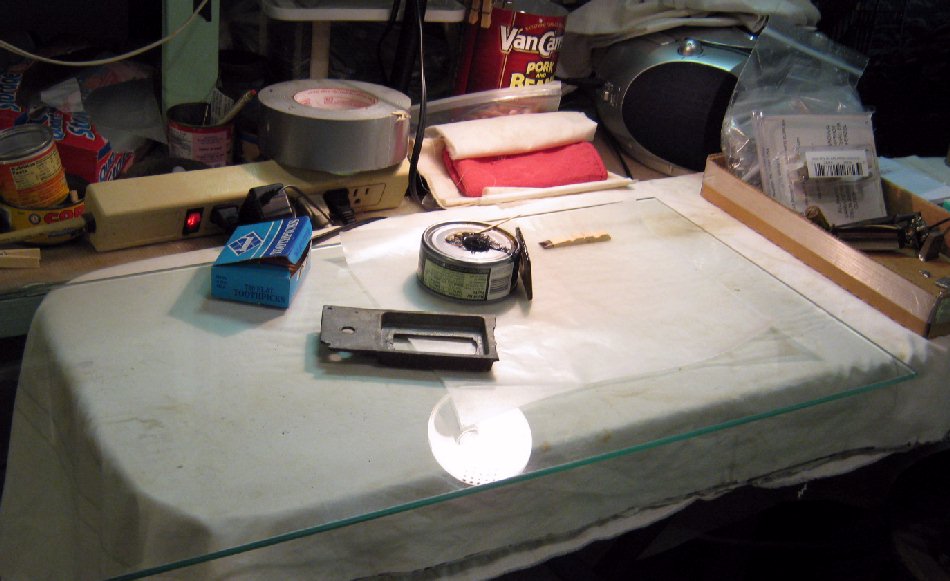

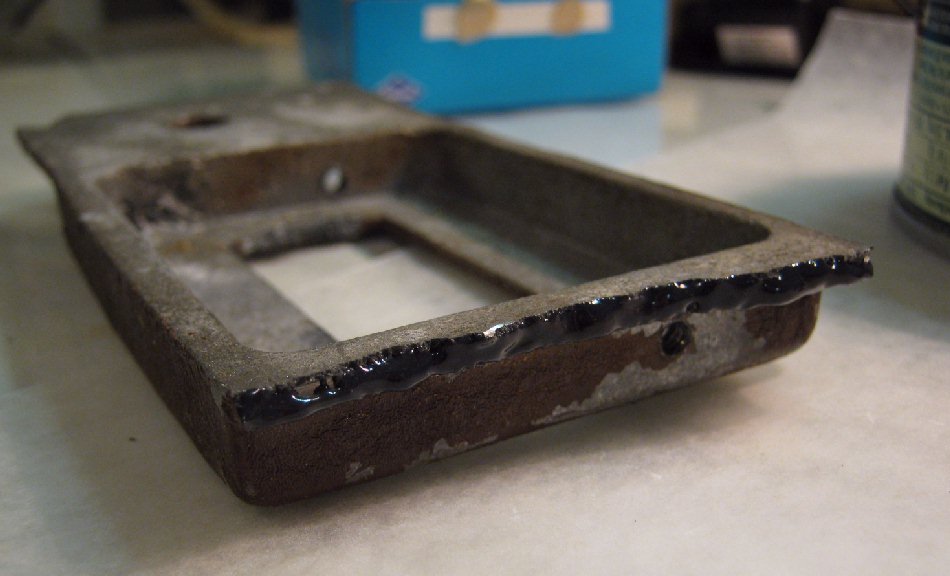
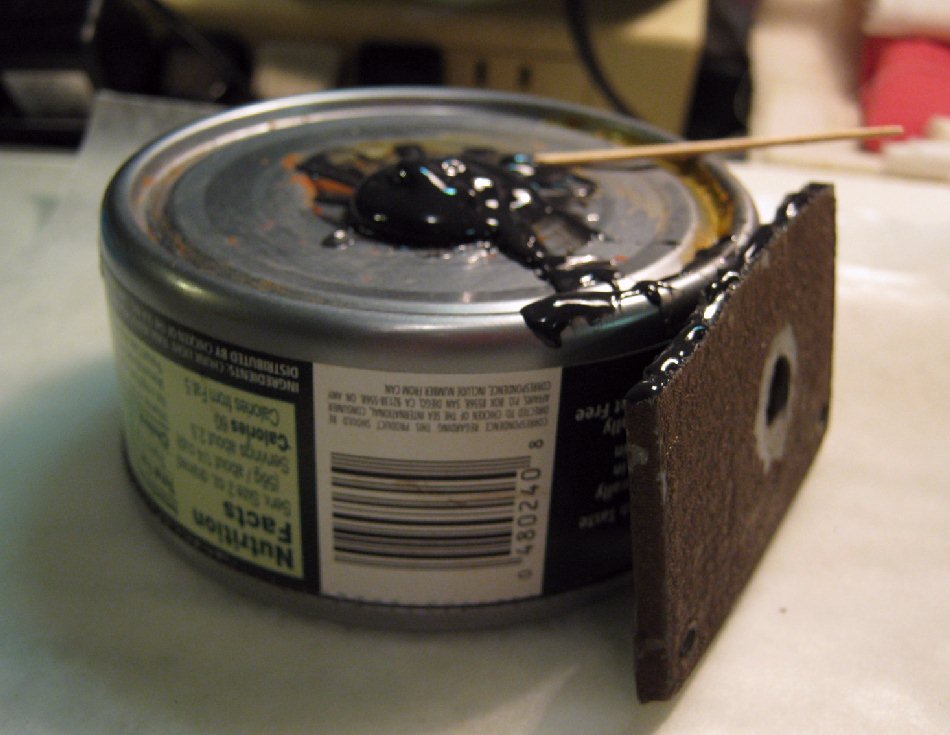
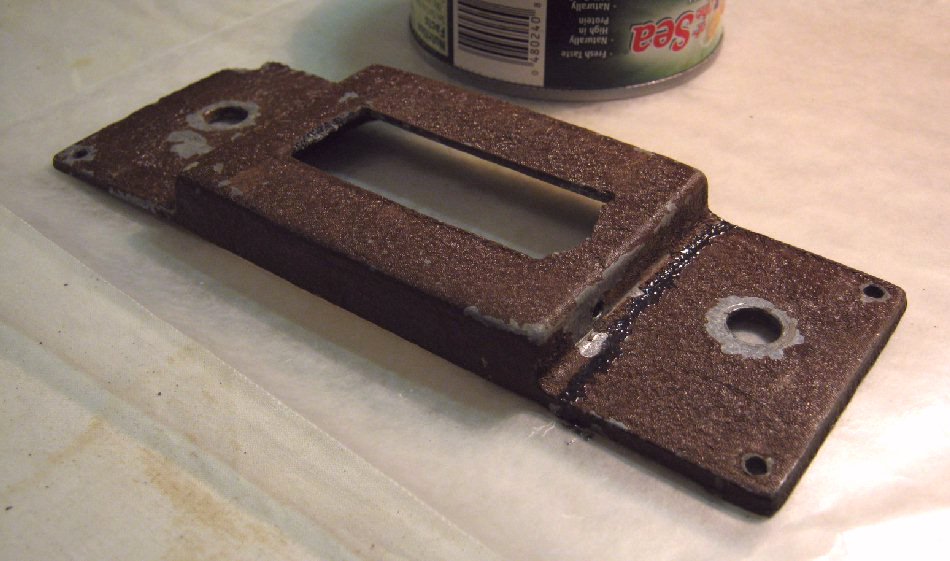
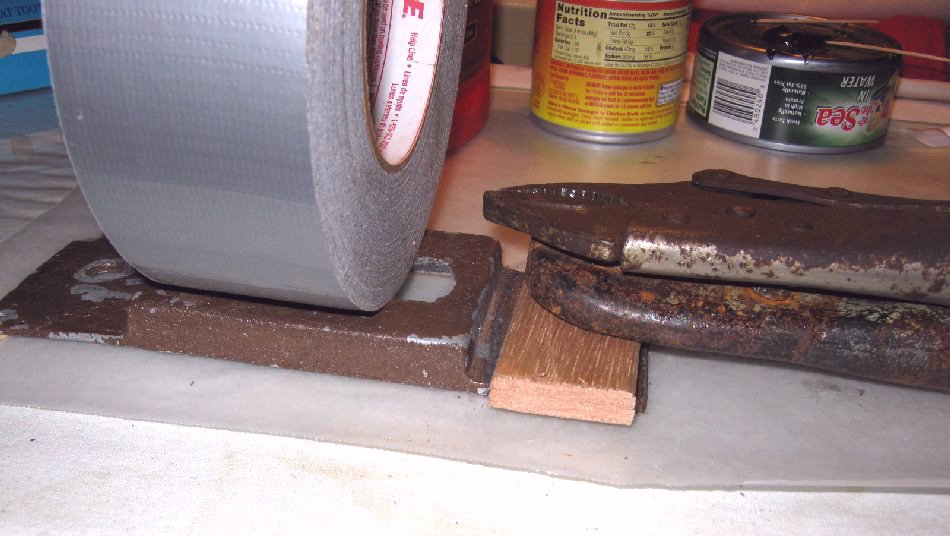
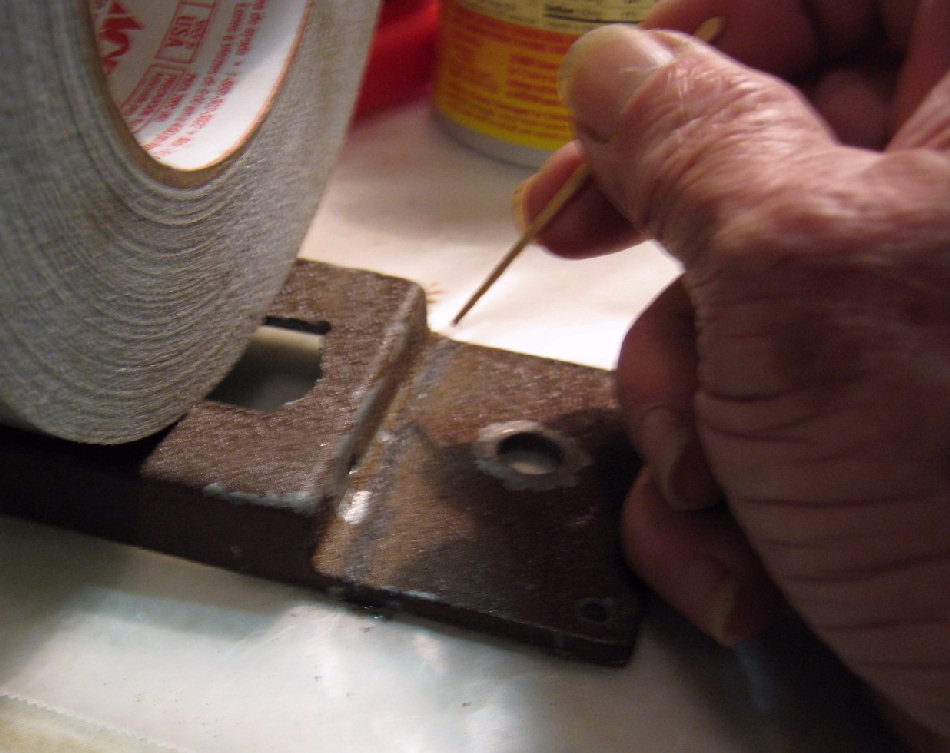
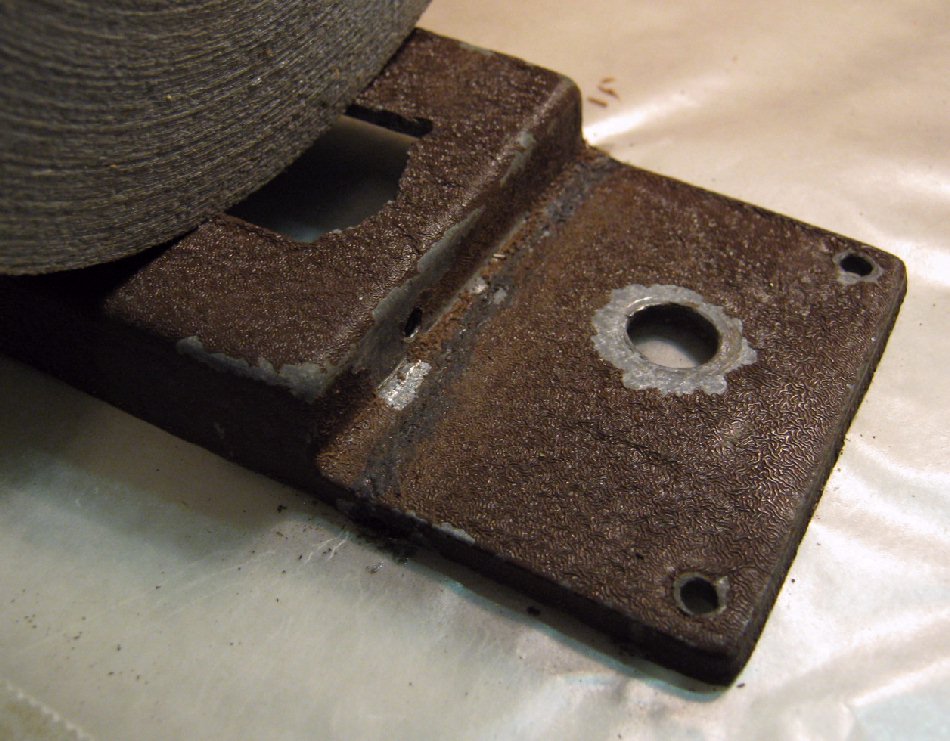
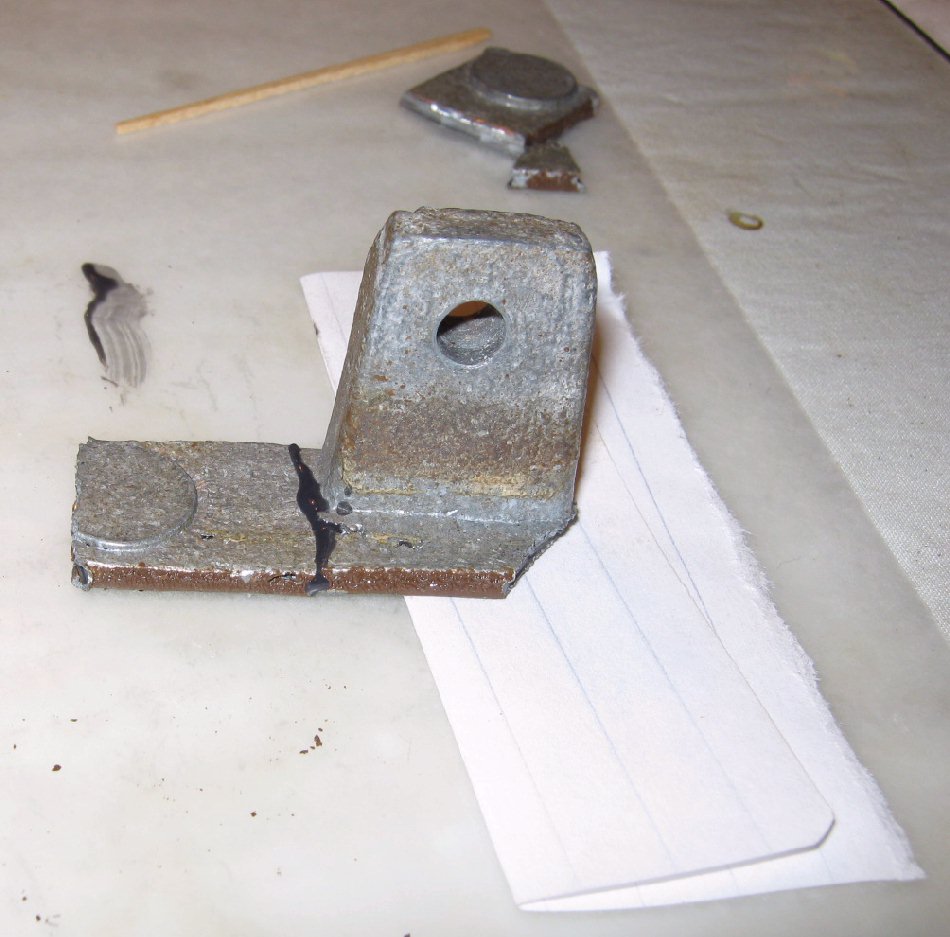
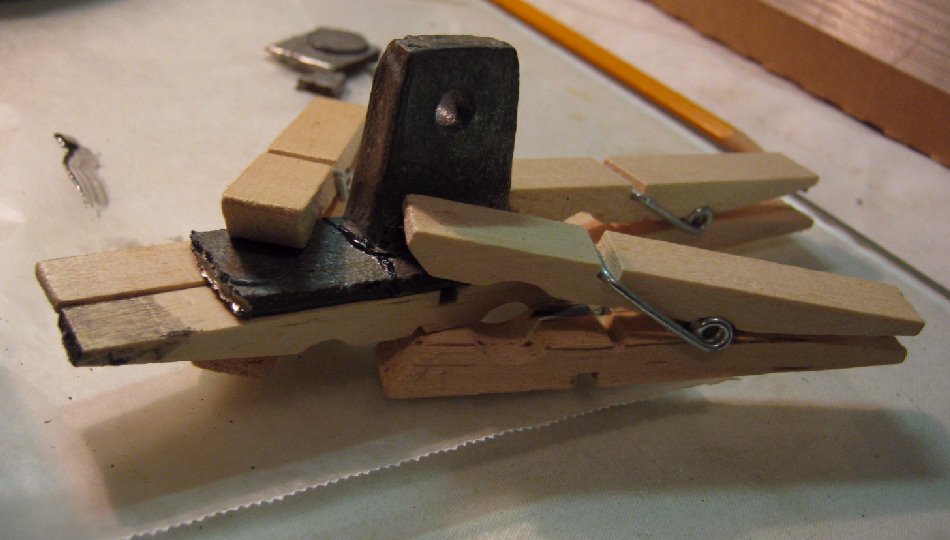
See Next Page; Epoxying Continued >>> |
V |
V |
Plate glass provides a dead-flat surface to help ensure that parts glued together on it will be aligned on and / or from the horizontal plane. Resins and glues will not stick to wax paper, placed over the glass work surface so that the pieces to be glued, or any glue drops, spills, smears, etc. will easily release from the work surface, and will also mold a nice smooth and flat finish on the bottom side of glued joints. |
Attack of the vicious Killer Clothespins: ("Ohhh No-o-o-o Mr. Bill, ...not the Killer Clothespins!".....) |
The images will have to speak for themselves until I get the free time to come back and add additional text for the tricks involved / shown in these images. |
Filling the joint channels with 'plastic steel' epoxy. |
Close look at the epoxy-filled channels: |
A bit of weight pressure keeps the joints dead flat on the glass, and the added bottom surface friction on the wax prevents glue sag from pushing the joints apart. |
When the epoxy has set firm to the point of no longer sagging, then I tap and cross-hatch a texture into the almost-set epoxy to simulate the surrounding texture, and lift off any access epoxy, but leaving a slight overlap of epoxy to cumulatively strengthen the joint. That texturing under a final painting of the electronics housing with it's original style krinkle paint will hide the joints quite well. Glued joints from the bottom side of the housing will be textured smooter and painted aluminum to match the underside of the housing. |
When sprayed with the housing's original style brown wrinkle paint the joint will not be conspicuous if even noticeable. |
Same general process for all of the parts. I will hand paint over the joints with aluminum paint and age-match it by rubbing-in tiny drops of appropriate colored plastic model paints. |